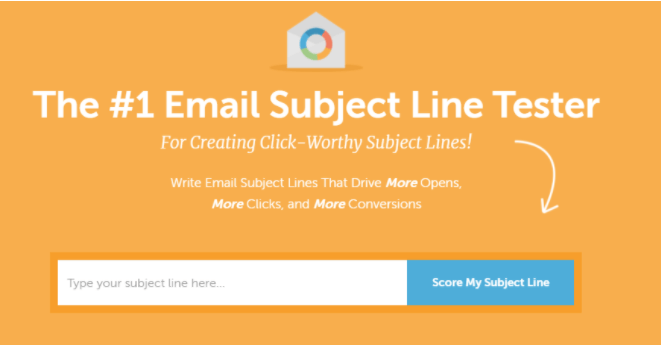How to write a pitch email to journalists in 3 steps: Example subject lines, story and timing
Give yourself the best chance of journalist coverage with our first-hand knowledge, including a ready-to-use email template! Visit Distinctly’s Digital PR page to find out how we can help you.
JUMP TO SECTION
Have your email pitch opened – subject lines
Engage the journalist – personalisation and tone
The email call to action – pitching and closing
Email pitch example template
Email is still the king of communication in the workplace. When it comes to promoting your piece of SEO content via email to journalists, there’s a direct correlation between the authority of a journalist that you’re hoping to land some coverage with and the number of emails they’ll receive in their inbox each day. With that in mind, it’s definitely worth knowing how to make your email stand out from the crowd.
A poorly written email will either get lost among the noise or deleted, so how do you go about sending a cold email that will grab the attention of your target? We’ve put together a handy guide to show you, step by step, how to construct your email pitch to journalists.
Understanding the relationship that journalists have with their inbox is the first step towards a successful email, allowing you to tailor your message specifically to them. With this in mind, the measure of a successful outreach email can be broken down into four key steps:
- Have your emails opened – a strong subject line is a must for a successful email. What’s the use of writing the rest if it’s not even going to be opened?
- Engage the journalist – convey your message in a short and succinct manner which easily conveys the next step
- The email call to action – are you asking outright for a link back to a piece of content you’ve created? Or are you looking to pitch unique content?
- Receive a reply stating interest / requesting further information
1. Have your email pitch opened
Subject line tactics for your email pitch
With hundreds of emails landing in a journalist’s inbox each day, what’s going to set yours apart and get past the first hurdle of being opened? A compelling subject line is crucial to ensure your email stands out.
Summarise the story in 7 – 10 words in a concise manner. If it’s a survey, consider using the standout statistic, or use key terms that you know are relevant to the journalist and current events.
Try starting out with a draft subject line and making use of tools to inform your subject headline. Headline analysers can measure the sentiment of a headline, the likelihood of engagement and provide an overall score. There are analysers that require payment, though the Co-Schedule Email Subject Line Tester is one that you can use for free and gives an overview of the strength of the subject.

Get Your Timings Right
Journalists are busy people, so in order to give your email the best chance of being read, aim to work with their daily schedule. Familiarise yourself with their day to day. Editorial meetings will take place each morning to go through the day’s work (depending on publication frequency) and for stories to be discussed, so you want to have your story with the journalist before then. This time varies by publication, though mid morning is a common time for these to be held, usually around 10 or 11am.
As a general rule send your emails in the morning and towards the start of the week – Tuesdays, Wednesdays or even Thursdays are best. This ensures you miss the busy ‘back to work’ Mondays. Though Fridays were once an ‘avoid at all costs’, we’ve seen a shift in this which is largely dependent on the story you’re promoting. If the story will be a piece that a journalist can quickly turn around then Friday is fine. If the story is a larger piece that will require time investment from a journo, a Friday outreach could be a courtesy to get plans in place the following week.
2. Engage the journalist – personalisation and tone
Personalise your pitch
Personalising your approach is a crucial element for your outreach email. By this we don’t mean being overly friendly and referencing every other article that they’ve ever written, but don’t place yourself on the back foot by not using their name (or even worse, the wrong name!) Using the journalist’s name is the very least you should do to show you’ve done your research.
You can go further with this still by providing a comment on why your offering is relevant to them based on their past articles or publication. Ensure this is done in a concise manner though – the first two opening lines in a press release should contain all the overview the journalist will need to understand the story. Don’t be tempted to give away this space to unnecessary waffle.
Tone of writing
The tone of your email will be key in tailoring the outreach to the journalist. A friendly tone to your email should be kept within the boundaries of professionalism, and usually a conversational tone should only be used after they have responded to your initial outreach. Keeping the sentences short, succinct and informative is most important in the first pitch.
Where the correspondence is more casual, such as in the case of an existing journalist contact, a more informal tone can benefit building a relationship. Remember you’re contacting another human – make sure they know you’re one as well!
3. The email call to action – pitching and closing
A clear and concise pitch
Once opened, the challenge is now engagement with your content. A survey looking into journalist habits showed the average journalist will have decided whether to follow up or disregard an email in under a minute of reading, so you have to get the story across sharpish.
Avoid pitches that are too sales-y. Journalists want to cover a good story that will be of interest to their readers. They aren’t interested in your client’s website that you’re looking to promote.
As we’re looking for coverage that will bring SEO benefits as well as great PR, a link to drive traffic to your client website is preferable. Ensure that you give the journalist a reason to do this – try one of the following:
-
-
- Full statistics from your survey, available on your client’s website
- A natural expansion of the press material, such as statistics on bike crime rates in the UK, for a piece on the client website showing how to secure your bike
- Visual representation of the press story
-
What are the main points that you want the journalist to see in your pitch? Using bold text for the keywords and text that you want to highlight can help the message stand out and cater for skimming.
Be careful not to overuse bold, as nobody wants to be told where to look or be overwhelmed by an email with a maze of bold text. Reserve it for the crucial information that summarises the whole story.
Closing lines
In a study conducted by email software providers Boomerang, the closing for your email was shown to be as important as the body. The study measured the effectiveness of different closing phrases by looking at 350,000 email threads and comparing response rates.
Signing off with a variation of ‘thanks’ (thank you, thanks in advance) was the most effective in gaining a reply. Using more traditional sign-offs such as ‘best’ or ‘regards’ garnered less than a third of responses in comparison to the best performing ‘thanks in advance’.
3. Email pitch example template
[Hi *name*]
[My name is **** and I’m getting in touch in regards to *this story that I’d like you to cover*]
[Sentence introducing your content and the core message of it]
[Sentence saying why is the content relevant to your journalist, perhaps why it is relevant to current events or a related statistic]
[“Included in this content is:”]
-
-
- Pick three points
- Summarising the information
- Bullet point them
-
[Where the target can find the content you’re offering – on your webpage or given a download link to view]
[Is this something of interest?][I look forward to hearing your thoughts. Full material is available on request]
[Thanks in advance,]



